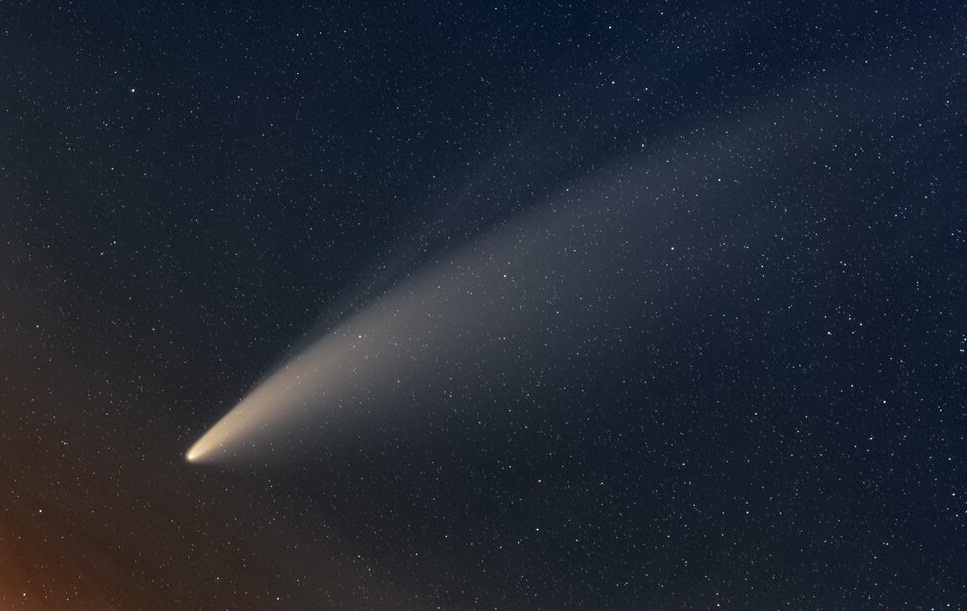Science & Technology
Comet C/2020 F3 Neowise
- 13 Jul 2020
- 5 min read
Why in News
The recently discovered comet C/2020 F3 will make its closest approach to the Earth at a distance of 64 million miles or 103 million kilometres while crossing Earth’s outside orbit on 22nd July 2020.
- It is also known as NEOWISE after the National Aeronautics and Space Administration (NASA) telescope that discovered it.
- On 3rd July, it was closest to the sun at 43 million km due to which its outer layer was released, creating an atmosphere (referred to as coma) of gas and dust from its icy surface.
- It will be visible through binoculars or a small telescope.
Key Points
- The word comet comes from the Latin word ‘Cometa’ which means ‘long-haired’.
- The earliest known record of a comet sighting was made by an astrologer in 1059 BC.
- Comets or ‘dirty snowballs’ are mostly made of dust, rocks and ice and can range in their width from a few miles to tens of miles wide.
- When they orbit closer to the sun, like C/2020 F3, they heat up and release debris of dust and gases.
- The solid portions of comets consisting mostly of water, ice and embedded dust particles are inactive when far away from the sun.
- When near the sun, the icy cometary surfaces vaporize and throw off large quantities of gas and dust thus forming the enormous atmosphere and tails.
- The released gases form a glowing head that can often be larger than a planet and the debris forms a tail that can stretch out to millions of miles.
- Each time a comet passes the sun, it loses some of its material and it will eventually disappear completely as a result.
- Comets may be occasionally pushed into orbits closer to the Sun and the Earth’s neighbourhood due to forces of gravity.
- According to NASA, while there are millions of comets orbiting the sun, there are more than 3,650 known comets as of now.
- The predictable comets are the short-period comets which take less than 200 years to orbit around the sun.
- These can be found in the Kuiper belt, where many comets orbit the sun in the realm of Pluto.
- One of the most famous short-period comets is called Halley’s Comet that reappears every 76 years. Halley’s will be sighted next in 2062.
- The less-predictable comets can be found in the Oort cloud that is about 100,000 AU (Astronomical Unit which is the distance between the Earth and the Sun and is roughly 150 million km) from the sun or 100,000 times the distance between the Earth and the sun.
- Comets in this cloud can take as long as 30 million years to complete one rotation around the sun.
- Visibility:
- Comets do not have the light of their own and the visibility depends on its gas and dust outbursts.
- Humans see the reflection of the sun’s light off the comet as well as the energy released by the gas molecules after it is absorbed from the sun.
- To be visible, a comet must make a particularly close approach to the sun to produce enormous quantities of gas and dust or it should make a relatively close approach to the Earth so that it is easily viewed.
Significance of the Study
- Astronomers believe that comets hold important clues about the formation of the solar system and it is possible that comets brought water and other organic compounds to Earth.
- NASA tracks all Near Earth Objects (NEOs) that includes comets and asteroids using telescopes placed all around the Earth, as part of its NEO Observation Program.
- Objective of the Program: To find, track and characterise NEOs that are 140 meters or larger in size since they can pose a risk to the Earth because of the devastation a potential impact can cause.







